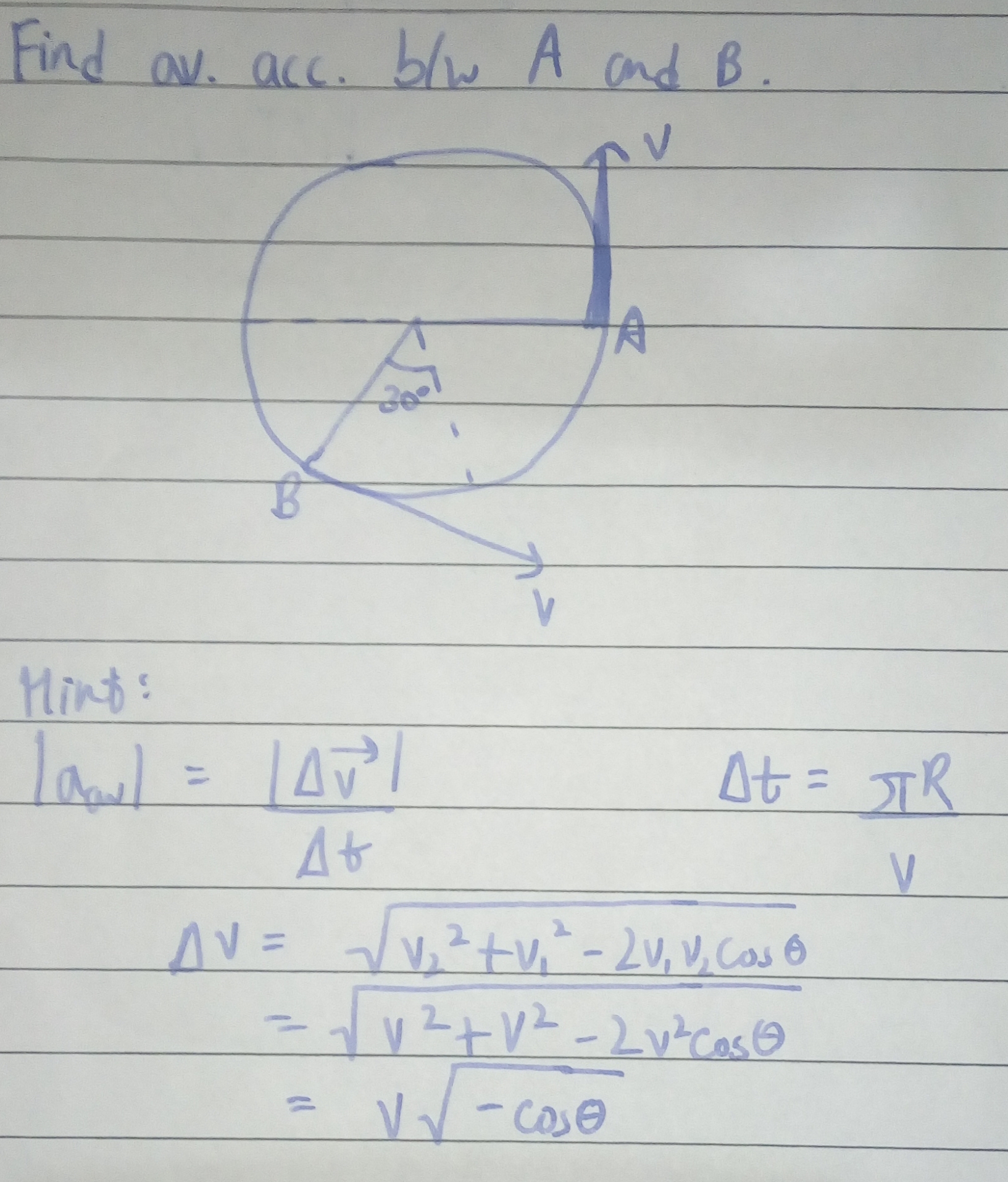#Delta bbv = bbv_B - bbv_A#
Using the scalar product:
#abs(Delta bbv) = sqrt( (bbv_B - bbv_A) * (bbv_B - bbv_A))#
#= sqrt( v_B^2 + v_A^2 - 2 abs(bbv_B) abs(bbv_A) cos theta )#
#= sqrt( V^2 + V^2 - 2 V^2 cos theta ) qquad because abs(bbv_A) = abs(bbv_B) = V#
#:. abs(Delta bbv) = sqrt2 V sqrt( 1 - cos theta )#
For time #Delta t#, distance travelled, #D#, is:
- #D = 2 pi R * (180^o + 60^o)/(360^o) = 4/3 pi R qquad because AhatOR = 180^o + 60^o#
#:. Delta t = D/V = (4 pi R)/(3V)#
Using the formula you are given:
#abs(bba_("ave")) = (abs(Delta bbv))/(Delta t)#
#= (3 sqrt2 V^2 sqrt( 1 - cos theta ) )/(4 pi R)#
In the scalar product, #theta# is the angle between #bbv_A# and #bbv_B#. From the geometry: #theta = 120^o, cos theta = - 1/2#
#abs(bba_("ave")) = (3sqrt3 V^2 )/(4 pi R)#
Dimensional analysis is always a useful check:
#((LT^(-1))^2)/(L) = L T^(-2)# <-- Correct unit of acceleration


